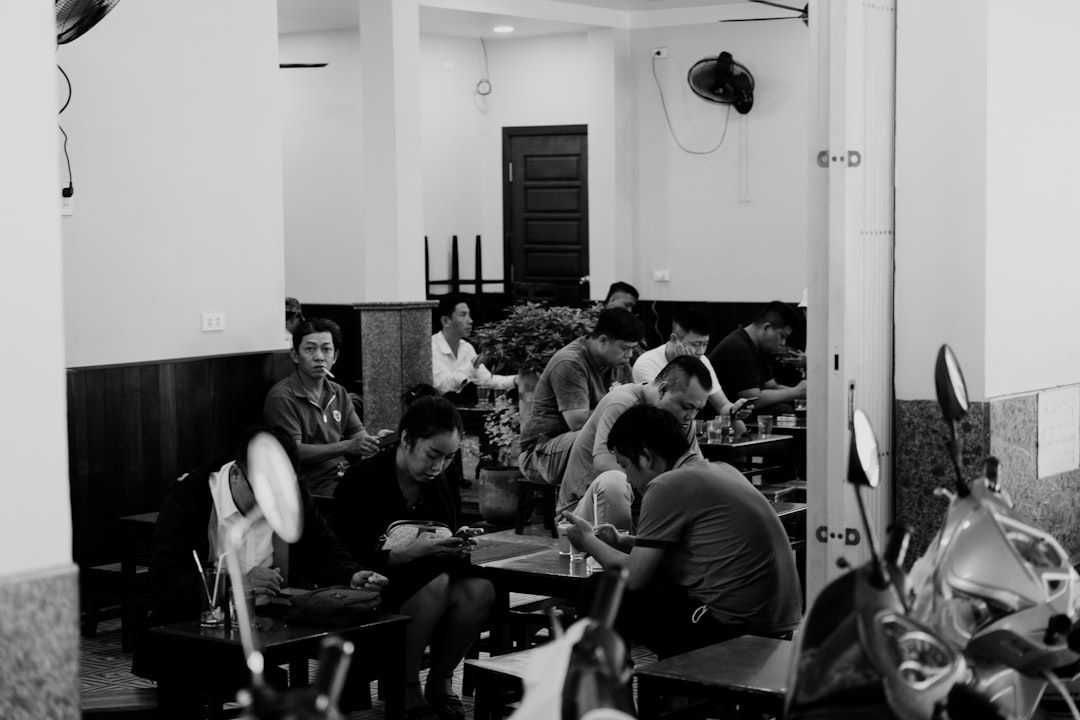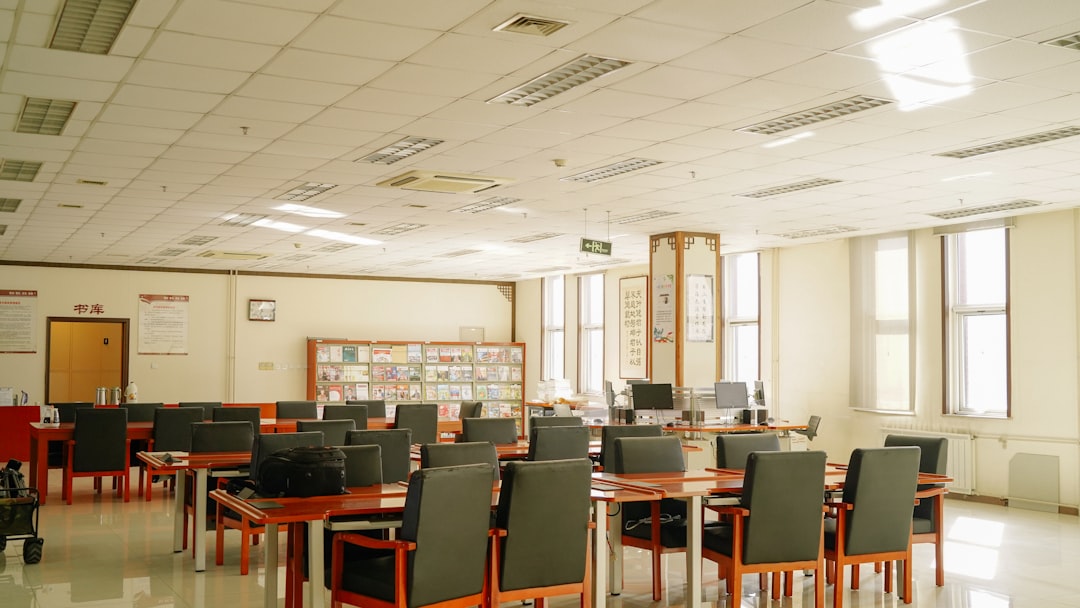

Engage prospects with a scan and streamline customer engagement with FREE QR code marketing tools by Sona – no strings attached!
Create a Free QR CodeFree consultation

No commitment

Engage prospects with a scan and streamline customer engagement with FREE QR code marketing tools by Sona – no strings attached!
Create a Free QR CodeFree consultation

No commitment
In today’s digitally driven academic environment, business schools are transforming their engagement strategies to keep pace with evolving student expectations. Gathering feedback is a crucial part of this transformation, informing curriculum updates, guiding improvements in student services, and providing actionable insights for leadership and faculty. However, many institutions encounter persistent friction with traditional feedback methods such as paper surveys and basic web forms, which often result in missed perspectives, delayed input, and low participation rates. Early adopters have used QR codes in business school publications to drive participation.
QR codes now offer business schools an agile and frictionless way to bridge offline interactions, such as events, classroom sessions, and printed course materials, with immediate digital feedback loops. With a simple scan using Sona QR, students, alumni, and faculty can share their experiences or complete surveys directly from their smartphones, eliminating barriers commonly seen in analog processes. This innovation helps schools overcome low feedback visibility and ensures valuable opinions are included, especially when participants are unlikely to complete lengthy or inconvenient forms.
This approach not only streamlines data collection but also enables business schools to continually enhance academic programs, student life, and operational efficiency. As decision-makers increasingly rely on real-time insights, strategic QR code deployments enable immediate access to reportable feedback and engagement data. Thoughtfully applied QR code solutions drive measurable outcomes and foster ongoing two-way communication in today’s business education environments.

QR codes help business schools close the loop between campus touchpoints and actionable insights by reducing the risk of valuable feedback falling through the cracks. When a student exits an MBA classroom, finishes an admissions information session, or leaves an alumni mixer, the moment to capture authentic impressions is fleeting. A well-placed QR code brings that moment to life, inviting a quick scan and a one-minute survey while the experience is still top of mind.
Many schools struggle with low survey completion rates or delayed reactions to student issues because they rely on printed questionnaires, email links sent days later, or one-size-fits-all web forms with poor mobile usability. QR codes modernize this flow by putting the survey at the point of engagement, making the call to action clear and the process fast. Instead of asking students to remember a URL or dig through an inbox, a scan takes them directly to the right form, reduces friction, and increases participation. For setup tips, see Google Forms QR codes.
This strategy empowers administrators, program directors, and marketing teams to build a reliable, data-driven improvement cycle across full-time and part-time MBA programs, executive education, and student services. The payoff is faster detection of issues, richer qualitative input, and better decisions at a higher cadence.

In business schools, legacy processes and disconnected digital strategies can leave marketing, student affairs, and admissions teams struggling with low visibility into participant experiences. When feedback relies on paper forms or post-event emails that are easy to overlook, the result is often incomplete information and delayed insight. QR codes solve this by turning every physical touchpoint into a digital gateway, capturing the data needed to improve the student journey in real time.
QR codes also reduce the need for app downloads or specialized hardware. They work on any modern smartphone and require only the device camera. This accessibility is vital on diverse campuses where students, faculty, and guests engage from different devices and locations. With dynamic QR codes, business schools can evolve survey links or landing pages without reprinting materials, so content stays relevant and aligned with changing agendas and schedules.
For example, dynamic QR codes on classroom doors, event badges, and printing kiosks address low follow-up rates by making instant survey access available and adaptive. The result is higher participation from audiences that might otherwise remain silent, more representative data, and the ability to act quickly on what matters.

Business schools serve multiple audiences with differing needs. The right QR format makes it easier to meet each need with minimal friction. In academic contexts, web links to forms and resource pages are the most common, but there are additional formats that improve convenience for specific scenarios such as alumni networking or guest Wi-Fi.
Selecting the correct format also influences the downstream experience. A QR code that opens a long, non-mobile-optimized page will depress completion rates, while a short, on-page form with progress indicators can improve conversion. For business schools, dynamic controls are an essential layer because schedules, cohorts, and survey goals change rapidly across the semester.
Dynamic QR codes are particularly valuable for schools that update surveys, session rosters, or event details frequently. Instead of reprinting posters or handouts, administrators can change the destination in a dashboard, preserving the physical asset and reducing waste.

Many business schools miss growth opportunities because potential feedback is never captured where it happens. The path to improvement runs through the places where students, alumni, and prospects already spend their time. QR codes make it easy to connect these physical environments to immediate digital actions that surface insights and accelerate follow-up.
The key is to plan placements with context in mind. A QR code above a classroom doorway should ask for a session rating, while a code in a career services office might invite suggestions for employer partners or professional development topics. By mapping QR codes to the natural rhythm of campus life, schools increase visibility, participation, and the quality of collected data. See back-to-school ideas for seasonal inspiration.
By maximizing every touchpoint, business schools ensure that even high-value but silent participants are surfaced and engaged through frictionless channels. Over time, these inputs create a living pulse of campus sentiment that guides smarter decisions.

Feedback collection in business schools depends on timing, context, and ease. QR codes remove friction at exactly the right moments, so teams capture what matters and can act fast. Whether the goal is to refine teaching, upgrade campus services, or nurture alumni networks, the following use cases deliver reliable gains in participation and data quality. For broader tactics, explore QR codes in marketing.
Direct outcomes often include higher survey completion rates, more representative samples, and faster cycle times for implementing changes. When integrated with analytics and CRM tools, schools can also segment responses by cohort, program type, channel, or event to see where improvements will have the greatest impact.
These use cases share a pattern: they put the survey where the experience occurs and respect the scanner’s time with succinct, mobile-first design. That combination reliably improves both participation and the quality of the insights gathered.
Collecting feedback is the first step. Turning those scans into audience signals that power follow-up and retargeting is where QR codes create lasting value. Each scan carries context: where it happened, when it happened, and what content it was tied to. With a segmentation plan, this context can be used to route prospects, students, and alumni into the right communication streams. For retargeting tactics, see Sona’s Playbook Intent-Driven Retargeting.
For business schools, common segments include prospective students versus current students, applicants versus admits, and engaged alumni versus dormant contacts. Segmentation enables targeted content, such as program-specific updates for inquisitive prospects, tutoring resources for students who flag support needs, or donation and mentorship opportunities for alumni who express event interest.
With a centralized platform, each QR code becomes a smart entry point into the funnel. For example, scans from an executive education brochure can trigger a case study email sequence, while scans from a student lounge suggestion poster can open a support ticket and notify student affairs. The result is better retargeting and more responsive service without adding operational burden.
Disconnected campaigns and inconsistent outreach often undermine marketing and student engagement in business schools. QR codes serve as the connective tissue across print, digital, and in-person channels, enabling consistent calls to action and measurable outcomes. When every physical piece points to a mobile experience, schools reduce friction and clarify the next step for the participant. See how QR links connect brands and consumers in this LA Business Journal analysis.
This integration also unlocks better attribution. Print ads, posters, and handouts traditionally resist measurement, but a QR code turns them into trackable media. Schools can see which assets drive engagement, at which locations, and at what times, then reallocate budgets toward the highest performers.
By syncing scan data with centralized analytics, schools can maintain campaign consistency, monitor which placements drive the most value, and map cohesive journeys from offline engagement to actionable next steps. A platform like Sona QR lets teams manage these codes at scale and integrate scan events with CRM records and ad audiences.
Even the best ideas need process. A clear execution plan ensures QR efforts launch smoothly, generate reliable data, and scale across departments without confusion. Use the following steps to design, deploy, and optimize campaigns that connect campus moments to measurable outcomes.
The most successful business schools standardize their approach, pilot in a few high-impact areas, then roll out to additional programs. As you proceed, keep the experience short, clear, and mobile friendly to respect the scanner’s time and to maximize completion.
Select a specific moment where a scan unlocks clear value. Concrete objectives such as capturing post-class feedback or accelerating inquiry-to-application conversions create sharper designs and better results. For instance, prioritize an MBA capstone feedback loop, an admissions info session evaluation, or an alumni networking event survey.
Choose static codes for permanent, non-tracked destinations that will not change, and dynamic codes for anything trackable, editable, or multi-channel. In most feedback contexts, dynamic is the right choice because academic schedules and survey questions evolve, and measurement is essential.
Visual clarity influences scan rates. Codes should be large enough to scan from typical distances, framed by brand colors for recognition, and paired with benefit-driven CTAs that set expectations. Before deploying, test across devices, lighting conditions, and viewing angles to ensure reliability.
Place codes where attention is highest and the action makes sense. Think like a participant, not a designer. Align code size, placement, and CTA with the physical environment and the likely mindset in that moment.
Collect and analyze scan data to see what is working. Look for patterns by time of day, room, cohort, and message. Use insights to refine placements, modify CTAs, or adjust the form length. Close the loop by sharing what changed as a result of the feedback to encourage future participation.
With tools like Sona QR, you can manage this full cycle: create dynamic codes, brand them consistently, monitor scans in real time, and sync outcomes with your CRM and attribution tools.
Without robust analytics, even strong QR feedback efforts can result in a partial view of engagement. Leaders need to know which campaigns are lifting response rates, where campus issues are concentrated, and how feedback translates into program improvements or enrollment gains. That means connecting scans to form submissions, segment tags, and downstream actions such as advising appointments or application starts. For frameworks on reporting impact, read Sona’s blog post Measuring Marketing’s Influence on the Sales Pipeline.
Analytics should be actionable, not just descriptive. A dashboard that shows scans by event and time helps, but the real power emerges when you can tie scans to specific outcomes and update decisions accordingly. This includes linking class feedback to teaching innovations, orientation surveys to support resources, and alumni event ratings to future programming.
A unified platform such as Sona QR simplifies these steps. Scan events can be logged with time, device, and placement details, synced to HubSpot or Salesforce, and stitched to multi-touch journeys in Sona.com so teams can trace how QR engagement contributes to applications, enrollments, and alumni outcomes.
Scaling QR code impact requires consistency, creativity, and a clear message about the value of scanning. The practical details matter: code size, CTA clarity, and staff promotion often determine whether people engage. Small improvements in these variables can compound into significant gains at scale.
Combine standardized best practices with bold experiments. Try new placements that reach underrepresented voices on campus or hard-to-measure audiences at off-site events. Always pair experimentation with analytics so winning ideas are captured and repeated.
You can generate and track your first dynamic QR codes with Sona QR in minutes. Start creating QR codes for free.
Leading business schools often encounter challenges like missed feedback after interviews or limited alumni input on programming. QR codes embedded at pivotal moments convert passive interest into active participation. Programs like the Darden School of Business have demonstrated QR-based engagement. The key is to match the prompt to the moment and make the benefit clear.
Schools that share back changes driven by feedback see sustained engagement. When students and alumni know their opinions lead to tangible improvements, they are more likely to scan again. That trust transforms QR from a one-off tactic into a habit that supports continuous improvement.
Testimonial: An MBA program director reported a 40 percent increase in post-class reflections after adopting QR-enabled surveys, transforming teaching evaluations and boosting the program’s reputation. Faculty noted that QR analytics helped prioritize curriculum updates by showing exactly which topics confused students and which formats resonated most.
Even experienced teams can stumble on avoidable mistakes. The most common pitfalls include placing QR codes where they cannot be easily scanned, using static codes when links need to change, and launching surveys without testing mobile usability. Every one of these issues reduces trust and participation.
Prevent these problems with a simple quality checklist, a consistent design guide, and cross-team coordination. Make one team responsible for setup and analytics, but empower faculty and event staff to promote scanning and to report on-the-ground observations back to the central team.
When schools pair these best practices with a disciplined analytics approach, they consistently improve scan rates and outcomes over time. The goal is not just to get more scans but to convert scans into changes that matter.
QR codes have evolved beyond simple convenience tools to become strategic enablers for business schools seeking to improve feedback depth, data quality, and stakeholder engagement. By transforming every event, document, and physical asset into a digital touchpoint, institutions can capture insights that previously remained inaccessible, reducing missed opportunities and the risk of incomplete decision-making.
Whether optimizing MBA curricula, boosting alumni involvement, or refining student support, well-managed QR campaigns translate offline engagement into measurable progress. With advanced tracking and integration capabilities, business schools can ensure every scan is a step toward continuous improvement, turning everyday interactions into lasting academic and operational growth. Tools like Sona QR and Sona.com help bridge the full journey by connecting scan activity to CRM records, audience segments, and attribution models. The result is a closed-loop system that makes feedback faster, smarter, and more impactful across the entire business school ecosystem.
QR codes have transformed business schools from traditional feedback collection methods into dynamic, real-time engagement channels. Whether it’s gathering comprehensive student insights, enhancing course evaluations, or streamlining administrative feedback, QR codes replace cumbersome surveys with instant, mobile-friendly actions that capture valuable data to improve educational outcomes. Imagine instantly knowing which teaching methods resonate best or which campus initiatives drive student satisfaction—and acting on that insight immediately.
With Sona QR, business schools can create dynamic, trackable QR codes in seconds, update feedback campaigns without reprinting materials, and connect every scan to meaningful analytics. No more delayed or incomplete data—just smarter, faster decisions that elevate the learning experience. Start for free with Sona QR today and transform every scan into actionable feedback that drives continuous improvement.
Business schools can improve feedback collection by using QR codes placed at key touchpoints like classrooms, events, and printed materials to enable quick, mobile-friendly surveys and immediate digital feedback.
QR codes eliminate barriers of paper surveys and email links by providing instant access to mobile-optimized forms, increasing participation rates, enabling real-time insights, and allowing dynamic updates without reprinting materials.
QR codes should be placed in context-rich, high-traffic areas such as classroom exits, event badges, student lounges, admissions materials, and career fairs where the action aligns with the participant's current experience.
Dynamic QR codes are preferred because they allow tracking, link updates without reprinting, and support analytics, while static codes are suitable for permanent, non-tracked destinations.
Schools can sync scan data with CRM and advertising platforms to segment audiences, personalize follow-ups, measure campaign effectiveness, and retarget prospects and alumni with relevant content.
Common pitfalls include placing codes where they are hard to scan, using static codes for changing links, deploying untested mobile forms, overlapping multiple codes without clear instructions, and neglecting follow-up automation.
QR codes enable real-time collection of fresh feedback tied to specific moments, facilitating faster issue detection, richer qualitative input, and timely curriculum or service adjustments.
Yes, QR codes can also share contact information, provide guest Wi-Fi access, enable one-tap SMS or email communication, link to app downloads, and support event registrations or resource distribution.
Schools should choose clear use cases, select the right QR code type, design and test codes for visibility and mobile usability, deploy them in high-impact locations, and track scan data for continuous optimization.
QR codes placed at moments such as class exits or event sessions allow participants to provide immediate impressions while the experience is fresh, increasing the accuracy and volume of feedback.
Use Sona QR's trackable codes to improve customer acquisition and engagement today.
Create Your FREE Trackable QR Code in SecondsJoin results-focused teams combining Sona Platform automation with advanced Google Ads strategies to scale lead generation

Connect your existing CRM

Free Account Enrichment

No setup fees
No commitment required

Free consultation

Get a custom Google Ads roadmap for your business






Launch campaigns that generate qualified leads in 30 days or less.
